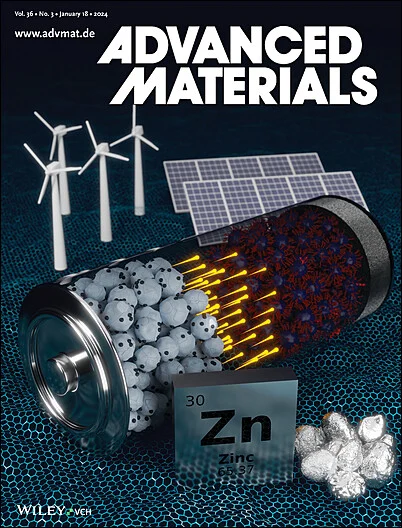Broadband THz Modulation via Solid-State Organic Electrochemical Devices
IF 27.4
1区 材料科学
Q1 CHEMISTRY, MULTIDISCIPLINARY
引用次数: 0
Abstract
The sub-Terahertz and Terahertz bands play a critical role in next-generation wireless communication and sensing technologies, thanks to the large amount of available bandwidth in this spectral regime. While long-wavelength (microwave to mm-Wave) and short-wavelength (near-infrared to ultraviolet) devices are well-established and studied, the sub-THz to THz regime remains relatively underexplored and underutilized. Traditional approaches used in the aforementioned spectral regions are more difficult to replicate in the THz band, leading to the need for the development of novel devices and structures that can manipulate THz radiation effectively. Herein a novel organic, solid-state electrochemical device is presented, capable of achieving modulation depths of over 90% from ≈500 nm of a conducting polymer that switches conductivity over a large dynamic range upon application of an electronically controllable external bias. The stability of such devices under long-term, repeated voltage switching, as well as continuous biasing at a single voltage, is also explored. Switching stabilities and long-term bias stabilities are achieved over two days for both use cases. Additionally, both depletion mode (always “ON”) and accumulation mode (always “OFF”) operation are demonstrated. These results suggest applications of organic electrochemical THz modulators in large area and flexible implementations.

求助全文
约1分钟内获得全文
求助全文
来源期刊

Advanced Materials
工程技术-材料科学:综合
CiteScore
43.00
自引率
4.10%
发文量
2182
审稿时长
2 months
期刊介绍:
Advanced Materials, one of the world's most prestigious journals and the foundation of the Advanced portfolio, is the home of choice for best-in-class materials science for more than 30 years. Following this fast-growing and interdisciplinary field, we are considering and publishing the most important discoveries on any and all materials from materials scientists, chemists, physicists, engineers as well as health and life scientists and bringing you the latest results and trends in modern materials-related research every week.
 求助内容:
求助内容: 应助结果提醒方式:
应助结果提醒方式:


